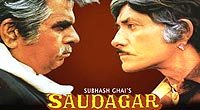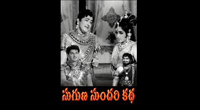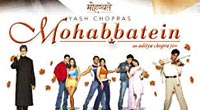Robin Hood is a legendary heroic outlaw originally depicted in English folklore and subsequently featured in literature and film. According to legend, he was a highly skilled archer and swordsman. In some versions of the legend he is depicted as being of noble birth, and having fought in the Crusades before returning to England to find his lands taken by the Sheriff. In other versions this is not the case and he is instead born into the yeoman class. Traditionally depicted dressed in Lincoln green, he is said to have robbed from the rich and given to the poor.
| Robin Hood | |
|---|---|
| Tales of Robin Hood and his Merry Men character | |
Woodcut of Robin Hood, from a 17th-century broadside | |
| First appearance | 13th/14th century AD |
| Created by | anonymous balladeers |
| Portrayed by | Robert Frazer Douglas Fairbanks Errol Flynn Cornel Wilde Jon Hall John Derek Richard Todd Don Taylor Richard Greene Giuliano Gemma Sean Connery Patrick Bergin Kevin Costner Russell Crowe Taron Egerton Cary Elwes Patrick Troughton David Watson Martin Potter Michael Praed Matthew Porretta Jonas Armstrong John Drew, Jr. Arthur Bourchier James Booth M. Pokora Boris Khmelnitsky |
| Voiced by | Brian Bedford Kazue Ikura Thor Bishopric |
| Information | |
| Aliases | Robyn Hode Robin of Sherwood Robin of Loxley (Locksley) Robert Fitzooth Robin de Courtenay Sir Robert Hode Robert Huntingdon |
| Occupation | Variable: yeoman, archer, outlaw Later stories: nobleman |
| Affiliation | Loyal to Richard the Lionheart |
| Spouse(s) | Maid Marian (in some stories) |
| Significant other(s) | Maid Marian |
| Religion | Christian |
| Nationality | English |
Through retellings, additions, and variations a body of familiar characters associated with Robin Hood have been created. These include his lover, Maid Marian, his band of outlaws, the Merry Men, and his chief opponent, the Sheriff of Nottingham. The Sheriff is often depicted as assisting Prince John in usurping the rightful but absent King Richard, to whom Robin Hood remains loyal. A common theme of the story is that Robin is a champion of the common people fighting against injustice, whilst remaining loyal to the rightful ruler. He became a popular folk figure in the Late Middle Ages, and the earliest known ballads featuring him are from the 15th century.
There have been numerous variations and adaptations of the story over the last six hundred years, and the story continues to be widely represented in literature, film and television. Robin Hood is considered one of the best known tales of English folklore.
The historicity of Robin Hood is not conclusively proven and has been debated for centuries. There are numerous references to historical figures with similar names that have been proposed as possible evidence of his existence, some dating back to the late 13th century. At least eight plausible origins to the story have been mooted by historians and folklorists, including suggestions that "Robin Hood" was a stock alias used by outlaws in general who did not want to reveal their identity.
Screenplay
The first clear reference to 'rhymes of Robin Hood' is from the alliterative poem Piers Plowman, thought to have been composed in the 1370s, but the earliest surviving copies of the narrative ballads that tell his story date to the second half of the 15th century, or the first decade of the 16th century. In these early accounts, Robin Hood's partisanship of the lower classes, his Marianism and associated special regard for women, his outstanding skill as an archer, his anti-clericalism, and his particular animosity towards the Sheriff of Nottingham are already clear. Little John, Much the Miller's Son and Will Scarlet (as Will 'Scarlok' or 'Scathelocke') all appear, although not yet Maid Marian or Friar Tuck. The latter has been part of the legend since at least the later 15th century, when he is mentioned in a Robin Hood play script.
In modern popular culture, Robin Hood is typically seen as a contemporary and supporter of the late-12th-century king Richard the Lionheart, Robin being driven to outlawry during the misrule of Richard's brother John while Richard was away at the Third Crusade. This view first gained currency in the 16th century. It is not supported by the earliest ballads. The early compilation, A Gest of Robyn Hode, names the king as 'Edward'; and while it does show Robin Hood accepting the King's pardon, he later repudiates it and returns to the greenwood.
The oldest surviving ballad, Robin Hood and the Monk, gives even less support to the picture of Robin Hood as a partisan of the true king. The setting of the early ballads is usually attributed by scholars to either the 13th century or the 14th, although it is recognised they are not necessarily historically consistent.
The early ballads are also quite clear on Robin Hood's social status: he is a yeoman. While the precise meaning of this term changed over time, including free retainers of an aristocrat and small landholders, it always referred to commoners. The essence of it in the present context was 'neither a knight nor a peasant or "husbonde" but something in between'. Artisans (such as millers) were among those regarded as 'yeomen' in the 14th century. From the 16th century on, there were attempts to elevate Robin Hood to the nobility and in two extremely influential plays, Anthony Munday presented him at the very end of the 16th century as the Earl of Huntingdon, as he is still commonly presented in modern times.
As well as ballads, the legend was also transmitted by 'Robin Hood games' or plays that were an important part of the late medieval and early modern May Day festivities. The first record of a Robin Hood game was in 1426 in Exeter, but the reference does not indicate how old or widespread this custom was at the time. The Robin Hood games are known to have flourished in the later 15th and 16th centuries. It is commonly stated as fact that Maid Marian and a jolly friar (at least partly identifiable with Friar Tuck) entered the legend through the May Games.
Early ballads
The earliest surviving text of a Robin Hood ballad is the 15th-century "Robin Hood and the Monk". This is preserved in Cambridge University manuscript Ff.5.48. Written after 1450, it contains many of the elements still associated with the legend, from the Nottingham setting to the bitter enmity between Robin and the local sheriff.
The first printed version is A Gest of Robyn Hode (c. 1500), a collection of separate stories that attempts to unite the episodes into a single continuous narrative. After this comes "Robin Hood and the Potter", contained in a manuscript of c. 1503. "The Potter" is markedly different in tone from "The Monk": whereas the earlier tale is 'a thriller' the latter is more comic, its plot involving trickery and cunning rather than straightforward force.
Other early texts are dramatic pieces, the earliest being the fragmentary Robyn Hod and the Shryff off Notyngham (c. 1475). These are particularly noteworthy as they show Robin's integration into May Day rituals towards the end of the Middle Ages; Robyn Hod and the Shryff off Notyngham, among other points of interest, contains the earliest reference to Friar Tuck.
The plots of neither "the Monk" nor "the Potter" are included in the Gest; and neither is the plot of "Robin Hood and Guy of Gisborne", which is probably at least as old as those two ballads although preserved in a more recent copy. Each of these three ballads survived in a single copy, so it is unclear how much of the medieval legend has survived, and what has survived may not be typical of the medieval legend. It has been argued that the fact that the surviving ballads were preserved in written form in itself makes it unlikely they were typical; in particular, stories with an interest for the gentry were by this view more likely to be preserved. The story of Robin's aid to the 'poor knight' that takes up much of the Gest may be an example.
The character of Robin in these first texts is rougher edged than in his later incarnations. In "Robin Hood and the Monk", for example, he is shown as quick tempered and violent, assaulting Little John for defeating him in an archery contest; in the same ballad Much the Miller's Son casually kills a 'little page' in the course of rescuing Robin Hood from prison. No extant ballad early actually shows Robin Hood 'giving to the poor', although in a "A Gest of Robyn Hode" Robin does make a large loan to an unfortunate knight, which he does not in the end require to be repaid; and later in the same ballad Robin Hood states his intention of giving money to the next traveller to come down the road if he happens to be poor.
Of my good he shall haue some, :Yf he be a por man.
As it happens the next traveller is not poor, but it seems in context that Robin Hood is stating a general policy. The first explicit statement to the effect that Robin Hood habitually robbed from the rich to give the poor can be found in John Stow's Annales of England (1592), about a century after the publication of the Gest. But from the beginning Robin Hood is on the side of the poor; the Gest quotes Robin Hood as instructing his men that when they rob:
loke ye do no husbonde harme :That tilleth with his ploughe. :No more ye shall no gode yeman :That walketh by gren-wode shawe; :Ne no knyght ne no squyer :That wol be a gode felawe.
And in its final lines the Gest sums up:
he was a good outlawe, :And dyde pore men moch god.
Within Robin Hood's band, medieval forms of courtesy rather than modern ideals of equality are generally in evidence. In the early ballad, Robin's men usually kneel before him in strict obedience: in A Gest of Robyn Hode the king even observes that 'His men are more at his byddynge/Then my men be at myn.' Their social status, as yeomen, is shown by their weapons; they use swords rather than quarterstaffs. The only character to use a quarterstaff in the early ballads is the potter, and Robin Hood does not take to a staff until the 17th-century Robin Hood and Little John.
The political and social assumptions underlying the early Robin Hood ballads have long been controversial. It has been influentially argued by J. C. Holt that the Robin Hood legend was cultivated in the households of the gentry, and that it would be mistaken to see in him a figure of peasant revolt. He is not a peasant but a yeoman, and his tales make no mention of the complaints of the peasants, such as oppressive taxes. He appears not so much as a revolt against societal standards as an embodiment of them, being generous, pious, and courteous, opposed to stingy, worldly, and churlish foes. Other scholars have by contrast stressed the subversive aspects of the legend, and see in the medieval Robin Hood ballads a plebeian literature hostile to the feudal order.
Early plays, May Day games and fairs
By the early 15th century at the latest, Robin Hood had become associated with May Day celebrations, with revellers dressing as Robin or as members of his band for the festivities. This was not common throughout England, but in some regions the custom lasted until Elizabethan times, and during the reign of Henry VIII, was briefly popular at court. Robin was often allocated the role of a May King, presiding over games and processions, but plays were also performed with the characters in the roles, sometimes performed at church ales, a means by which churches raised funds.
A complaint of 1492, brought to the Star Chamber, accuses men of acting riotously by coming to a fair as Robin Hood and his men; the accused defended themselves on the grounds that the practice was a long-standing custom to raise money for churches, and they had not acted riotously but peaceably.
It is from the association with the May Games that Robin's romantic attachment to Maid Marian (or Marion) apparently stems. A "Robin and Marion" figured in 13th-century French 'pastourelles' (of which Jeu de Robin et Marion c. 1280 is a literary version) and presided over the French May festivities, 'this Robin and Marion tended to preside, in the intervals of the attempted seduction of the latter by a series of knights, over a variety of rustic pastimes.' In the Jeu de Robin and Marion, Robin and his companions have to rescue Marion from the clutches of a 'lustful knight'. The naming of Marian may have come from the French pastoral play of c. 1280, the Jeu de Robin et Marion This play is distinct from the English legends. although Dobson and Taylor regard it as 'highly probable' that this French Robin's name and functions travelled to the English May Games where they fused with the Robin Hood legend. Both Robin and Marian were certainly associated with May Day festivities in England (as was Friar Tuck), but these may have been originally two distinct types of performance – Alexander Barclay in his Ship of Fools, writing in c. 1500, refers to 'some merry fytte of Maid Marian or else of Rob
Watch movie Robin Of Locksley online on Amazon
Watch movie Robin Of Locksley online
Watch The Movie On PrimeGo Full HD Movie Download

Khoya Khoya Chand Full HD Movie Download

Pyaar Koi Khel Nahin Full HD Movie Download

Yeh Kaisa Insaaf Full HD Movie Download

Saudagar Full HD Movie Download

Ghazab Full HD Movie Download

Jaal (1986) Full HD Movie Download
.jpg)
Revolutionary Road Full HD Movie Download

Idhaya Thirudan Full HD Movie Download

Manal Kaiyru Full HD Movie Download

Love Dot Com Full HD Movie Download

Yeh Hai Aurat Full HD Movie Download

Suguna Sundari Katha Full HD Movie Download

Chakkani Chukka Full HD Movie Download

Datta Putrudu Full HD Movie Download

Abhimanavanthulu Full HD Movie Download

International Don Full HD Movie Download

My Boss Bajranbali Full HD Movie Download

Deham Full HD Movie Download

Gali Medalu Full HD Movie Download

Mohabbatein Full HD Movie Download

Download latest Movie from bollywood
- 1> baaghi 3
- 2> THE SKY IS PINK MOVIE FULL STORY AND REVIEW
- 3> Luka Chuppi
- 4> TO ALL THE BOYS I’VE LOVED BEFORE
- 5> Kabir Singh
- 6> Street Dancer 3D
- 7> Simmba
- 8> Gone Girl
- 9> The Girl Who Lived
- 10> Ludo
- 11> DILWALE DULHANIA LE JAYENGE
- 12> GUILTY
- 13> The Godfather
- 14> Adventures of Rusty
- 15> Sooryavanshi
- 16> Satyameva Jayate 2
- 17> Thappad
- 18> Bhool Bhulaiyaa 2
- 19> KGFChapter 2
- 20> Mardaani 2
- 21> Pinjar
- 22> Shivaji maharaj
- 23> Ek Villian 2
- 24> Hungama 2
- 25> Divergent
- 26> Mumbai Saga
- 27> The Internship
- 28> HIT (telugu)
- 29> Panga
- 30> The perfect date
- 31> 16 December
- 32> Gopala Gopala (Telugu)
- 33> Brahmastra
- 34> Gangubai Kathiawadi
- 35> Manmadhudu
- 36> Nenu local
- 37> Mahanati
- 38> Shatamanam bavathi
- 39> Lagaan
- 40> After
- 41> MOM
- 42> Shamshera
- 43> Raguvaran BTech
- 44> Khakee
- 45> The villain
- 46> OM
- 47> Mr. perfect
- 48> Bueatifull mind
- 49> Hichki
- 50> Gabbar Singh
- 51> Jogi
- 52> Before Sunrise
- 53> Before Sunset
- 54> Before Midnight
- 55> The Big Bull
- 56> Top Gun: Maverick
- 57> The Purge
- 58> The Sky is Pink
- 59> Laxmmi Bomb
- 60> Sadak 2
- 61> Sufna
- 62> Prithviraj
- 63> PK
- 64> Coolie No 1(2020)
- 65> Black Widow
- 66> Dear Zindagi
- 67> Dil Bechara
- 68> PHIR HERA PHERI
- 69> WAR
- 70> Dostana
- 71> RRR: Roudram Ranam Rudhiram
- 72> Maidan
- 73> Dabbang 3
- 74> Chhalaang
- 75> life as we know it
- 76> SherShaah
- 77> Sandeep Aur Pinky Faraar
- 78> Event Horizon
- 79> 83
- 80> Radhe: Your Most Wanted Bhai
- 81> Gunjan Saxena: The Kargil Girl
- 82> Mr India
- 83> Vivah
- 84> Anokha Bandhan
- 85> Ghost
- 86> Bhoot: Part One - The Haunted Ship
- 87> Haseen Dilruba
- 88> Laal Singh Chaddha
- 89> Qismat
- 90> Rajput
- 91> Drive
- 92> Dil Chahta Hai
- 93> Dil Ki Baazi
- 94> Dil Ka Rishta
- 95> Teesri Manzil
- 96> Dil
- 97> Love Aaj Kal
- 98> Khaali Peeli
- 99> Bunty Aur Babli 2
- 100> Atrangi Re
- 101> Gulabo Sitabo
- 102> Jodi
- 103> Suraj Pe Mangal Bhari
- 104> Deewana
- 105> Attack
- 106> Sardar Udham Singh
- 107> Toofan
- 108> THE LOVEBIRDS
- 109> Jersey
- 110> Ginny Weds Sunny
- 111> Thalaivi
- 112> Shiddat
- 113> Angels vs Zombies
- 114> Koi Mil Gya
- 115> Thank God
- 116> Bhuj: The Pride of India
- 117> Hum Aapke Hain Kaun
- 118> The Platform
- 119> Bird Box
- 120> Roohi Afzana
- 121> Torbaaz
- 122> Nikamma
- 123> World War Z
- 124> Extraction
- 125> Train to Busan
- 126> Life of Pi
- 127> SHAADI MEIN JROOR AANA
- 128> Himmat Aur Mehnat
- 129> To All The Boys: P.S. I Still Love You
- 130> Mimi
- 131> Good Newwz
- 132> Shubh Mangal Zyada Saavdhan
- 133> Raabta
- 134> Harry Potter and the Philosopher's Stone
- 135> Harry Potter and the Chamber of Secrets
- 136> Chhapaak
- 137> War of the Worlds
- 138> Harry Potter and the Prisoner of Azkaban
- 139> Harry Potter and the Goblet of Fire
- 140> MURDER MYSTERY
- 141> Shakuntala Devi
- 142> Bachchan Pandey
- 143> Jayeshbhai Jordar
- 144> Sheer Qorma
- 145> Saina
- 146> 'O' Pushpa I hate tears
- 147> Kedarnath
- 148> MS Dhoni The Untold Story
- 149> Chhichhore
- 150> Badhaai Ho
- 151> Unstoppable
- 152> Oz the Great And Powerful
- 153> The Girl on the Train
- 154> Haathi Mere Saathi 2020
- 155> The Conjuring: The Devil Made Me Do It
- 156> Gandhi Se Pehle Gandhi
- 157> The Song of Scorpions
- 158> Srimanthudu
- 159> Hello Guru Prema Kosame
- 160> Beauty and The Beast
- 161> Black Panther
- 162> Charlie and the Chocolate Factory
- 163> Bole Chudiyan
- 164> Fidaa
- 165> Duvvada Jagannadham
- 166> Bruce Lee: The Fighter
- 167> Hyper
- 168> Yaara
- 169> Red (2020)
- 170> Shivam
- 171> That Is Mahalakshmi
- 172> Nishabdham
- 173> Aashram 2020 web series
- 174> Laxmii
- 175> Mismatched
- 176> STUDENT OF THE YEAR 2
- 177> NAIL POLISH
- 178> Ramprasad Ki Tehrvi
- 179> KAAGAZ
- 180> 12 o Clock
- 181> The Power
- 182> bolo hau
- 183> Tribhanga
- 184> JAMUN
- 185> Madam Chief Minister
- 186> Maasaab
- 187> Aadhaar
- 188> Tanhaji
- 189> Bhaagi 3
- 190> Bhootnath
- 191> MALANG
- 192> Jai Mummy Di
- 193> Haathi Mere Saathi 2021
- 194> Shakeela
- 195> Unpaused
- 196> Annayya
- 197> Vamsoddharakudu
- 198> Mrugaraju
- 199> Narasimha Naidu
- 200> Sankranti
- 201> Manasu Maata Vinadhu
- 202> Anjaane
- 203> Apaharan
- 204> Bachke Rehna Re Baba
- 205> Bewafaa
- 206> Roohi
- 207> Radhe
- 208> Zindagi Khoobsoorat Hai
- 209> Yeh Mohabbat Hai
- 210> Yeh Kya Ho Raha Hai?
- 211> The Tomorrow War
- 212> DehradunDiary
- 213> Meri Shaadi Karaoo
- 214> Matruu Ki Bijlee Ka Mandola
- 215> No One Killed Jesica
- 216> Aag Ka Goola
- 217> Eight Million Dollars
- 218> Three Hundred
- 219> Cats and Dog
- 220> Decoy
- 221> Gold Rush
- 222> You Have Got Mail
- 223> Final Destination three
- 224> Tofan
- 225> Jungle
 Story of movie Robin Of Locksley :
Story of movie Robin Of Locksley : 